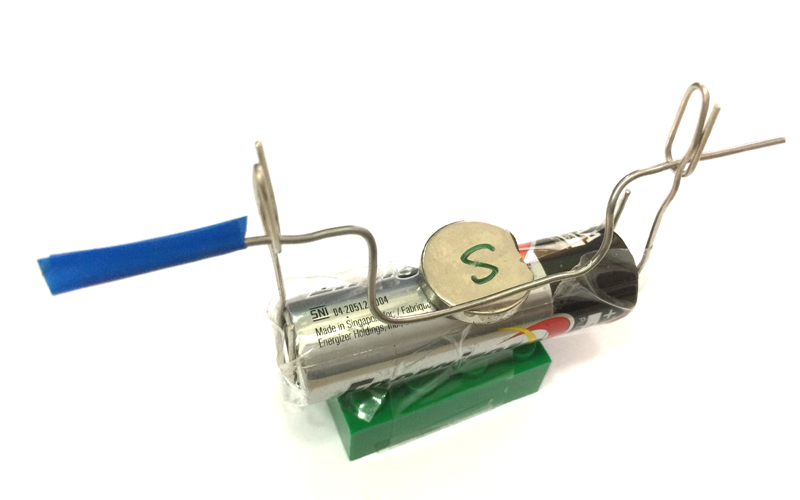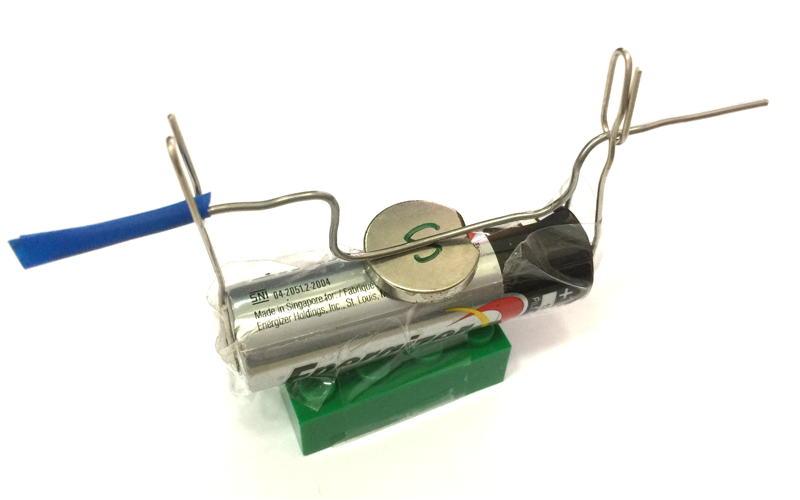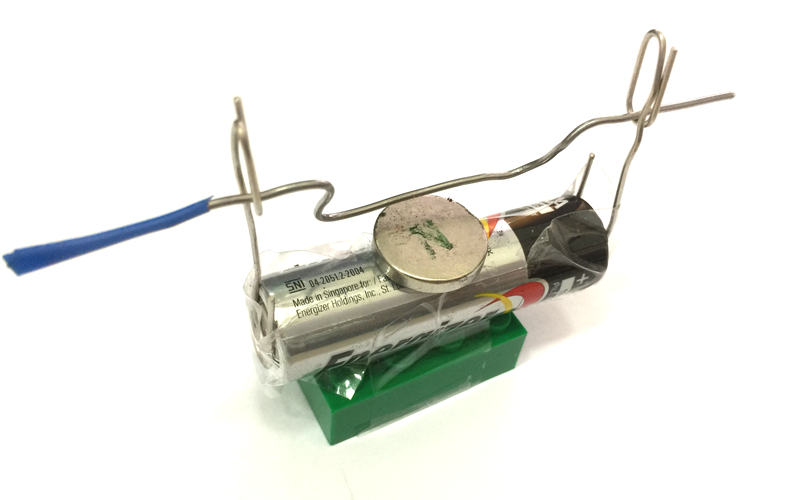Access via https://www.geogebra.org/m/erehat7n for a full-screen view.
This is a post that exists simply to park the YouTube videos that I might need to use during a JC2 lecture on Electromagnetism.
Using a neodymium magnet, some paper clips and a battery, you can demonstrate the magnetic force acting on a current-carrying wire while recalling Fleming’s left-hand rule. Using the same frame constructed in the previous video, you just need to add a wire with a few bends in between to create a U-shape in the middle as shown in the picture below. A small piece of insulating tape (you can use any adhesive tape) is added to one end of the wire to show the original dangling position of the U-shape before current flows through it. Be sure to leave some space at the end with the insulating tape for you to switch on and off the current by pushing that end in and out.



Using material that is easily available, you can build a simple homopolar D.C. motor (one that uses a single magnetic pole. I made the video above to help you do so.
The material used are as follows:

- insulated copper wire
- paper clips
- neodymium magnet
- 1.5V AA battery
- plastic or wooden block (I used a 4×2 Lego block)
- scissors
- permanent marker
- adhesive tape
The steps involved are:
- Attaching the magnet on the side of the battery using a long piece of adhesive tape and sticking both of them onto the Lego block. The polarity of the magnet does not matter.
- Next, we need to shape one end of each paper clip so as to make it longer and to make a small loop at the top. The paper clips are then fixed on the ends of the battery using adhesive tape.
- Coiling wire can be done with the help of a round cylindrical object such as a marker. Roughly 10-15 coils will do.
- The ends of the wire can used to bundle the coils together. Make sure they are tied up tightly.
- Since we are using an insulated wire (otherwise the current will just go straight from one paper clip to another without passing through the coils), we need to scrape of the insulation at the ends using either sandpaper or the edge of a pair of scissors.
- Using a permanent marker, we can colour one side each end in order to insulate that side. This will prevent current from flowing through the loops for half of every cycle. It has the same effect as that of a commutator.
- Finally, we will mount the coils onto the two paper clips and allow the motor to spin.
Do take note that the motor should not be left connected to the battery for too long as it will drain the battery very quickly and generate a lot of heat in the process.
How this can be used for the O-level/A-level syllabus
Teachers can use this as a demonstration that shows the motor effect of a current in a wire placed in a magnetic field, as well as to apply Fleming’s left-hand rule.
One can also make an second coil without insulating half the surface of the points of contact with the paper clips to show the importance of the commutator in a DC motor. The coil will simply oscillate to and fro due to the change in direction of the magnetic force on the lower half of the loop every half a turn.
I made this rather simple video this morning showing a physics demonstration on the effect of magnetic shielding. A paper clip is shown to be attracted to a magnet. A series of objects are placed in between, such as a plastic ruler, a steel ruler, a steel bookend, and some coins of different alloys.
It is interesting to note the types of material that provide magnetic shielding and those that do not. There is even a distinction between the types of steel, which is an alloy containing iron. Ferritic steel is magnetic while austenitic steel is not.
The theory behind magnetic shielding is that the flat magnetic material will direct the field lines of the magnet along its plane instead of allowing them to pass through, thus depriving the paper clip of a strong enough magnet field to keep it flying.
I didn’t want to spend money on buying a piece of pyrolytic graphite and large neodymium magnets so I made do with what I have to make the following video. While diamagnetism is not in the A-level physics syllabus, it’s good for students to know that there are other classifications of magnetic materials.
What we study in our syllabus is ferromagnetism, which is exhibited by materials such as iron, cobalt and nickel. Some pencil leads are paramagnetic (weakly attracted to magnets) while others such as the one in the video are diamagnetic (repelled by magnets).
I bought my neodymium magnets from DX.com and the shipping to Singapore takes about 3 weeks, so you might want to factor that time in if you want to get some for your lessons. These magnets are great for other demonstrations such as homopolar motors and Newton’s nightmare.